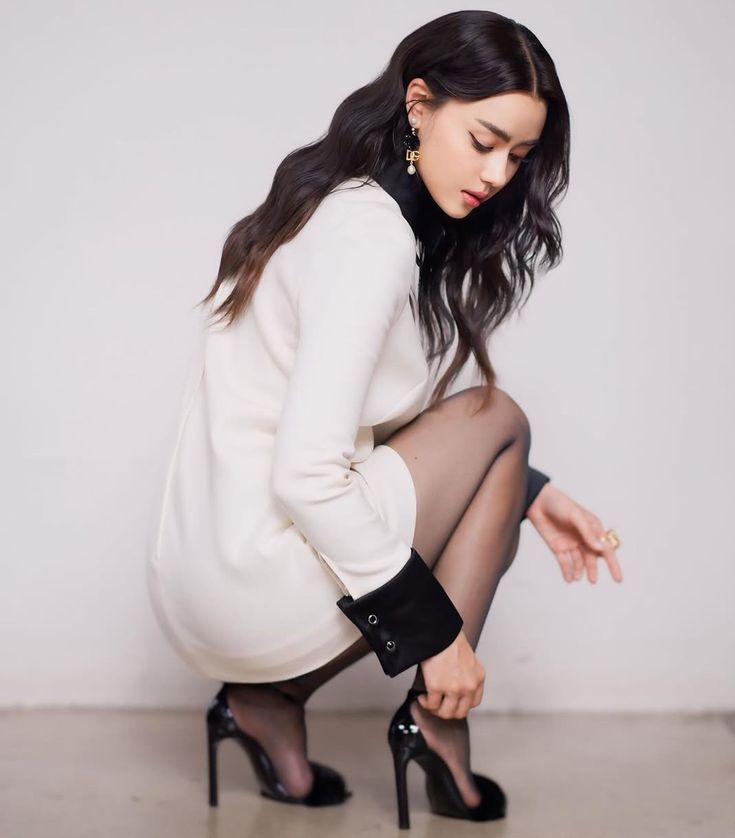Portrait photography is more than just taking pictures of people—it’s about telling a story, evoking feelings, and capturing the essence of a person. At its core, portrait photography is an art form that conveys emotions through imagery, creating a powerful connection between the subject, the photographer, and the viewer.
This blog explores the techniques, strategies, and creative approaches necessary to capture genuine emotions in portrait photography. By mastering these skills, you can take your portraits to the next level, creating images that leave a lasting impact.
1. Understanding the Power of Emotions in Portraits
Emotions are the heart of portrait photography. They add depth, authenticity, and relatability to your images. A photograph that conveys emotion can evoke a visceral reaction, allowing the viewer to connect with the subject on a deeper level.
1.1 Emotional Storytelling
Each portrait tells a story. Whether it’s a moment of joy, introspection, or vulnerability, the emotions conveyed in a portrait can transform an image from a simple photo to a meaningful narrative.
1.2 Why Authenticity Matters
Genuine emotions resonate more strongly than staged expressions. Capturing authentic moments creates trust and relatability, making your portraits stand out.










2. Building a Connection with Your Subject
Establishing trust and rapport with your subject is key to capturing raw emotions. A comfortable subject is more likely to open up, allowing their genuine personality to shine through.
2.1 Communication Is Key
Begin by having an open conversation with your subject. Ask them about their interests, experiences, and what they hope to achieve through the session. This helps you understand their personality and emotional state.
2.2 Create a Relaxed Environment
The atmosphere during a shoot can influence the emotions captured. Use calming tones, positive reinforcement, and a friendly demeanor to make your subject feel at ease.
2.3 The Importance of Empathy
Empathy allows you to understand your subject’s feelings and connect with them on a deeper level. This connection translates into more emotive portraits that reflect the subject’s true self.
3. Mastering the Role of Lighting in Emotional Portraits
Lighting is one of the most powerful tools in portrait photography. It shapes the mood of your images and highlights the emotions you want to convey.
3.1 Soft Light for Tender Emotions
Soft lighting, such as diffused natural light or light from a softbox, is ideal for capturing gentle, introspective emotions. It smoothens shadows and creates a serene, calming effect.
3.2 Dramatic Light for Intensity
Hard, directional light adds drama and intensity to a portrait. It can emphasize strong emotions like determination or sorrow by creating bold contrasts and deep shadows.
3.3 Backlighting for Ethereal Vibes
Backlighting creates a dreamy, otherworldly effect that’s perfect for portraits with a sense of wonder or nostalgia. It highlights silhouettes and adds a halo-like glow to the subject.
4. The Role of Composition in Evoking Emotions
Composition directs the viewer’s eye and influences how they perceive the emotions in a portrait. Strategic framing, angles, and placement play a critical role in storytelling.
4.1 Rule of Thirds for Balance
The rule of thirds creates a harmonious composition that naturally draws the viewer’s attention to the subject. It’s a versatile technique for capturing balanced and emotionally compelling portraits.
4.2 Close-Ups for Intimacy
Close-up shots emphasize facial expressions, drawing attention to the eyes, mouth, and other features that convey emotion. These details make the portrait feel personal and intimate.
4.3 Negative Space for Reflection
Incorporating negative space can create a sense of solitude or contemplation. It allows the subject to stand out while giving the viewer room to interpret the emotions in the image.
5. Capturing Emotion Through Body Language and Expressions
Facial expressions and body language are the primary ways subjects convey emotion in portraits. As a photographer, your ability to notice subtle cues can make or break a shot.
5.1 The Power of Eye Contact
Eyes are often called the “windows to the soul” for a reason. Direct eye contact can convey confidence, intimacy, or intensity, while averted gazes suggest thoughtfulness or vulnerability.
5.2 Posture and Gestures
The way a subject holds their body can communicate a wide range of emotions. A relaxed posture suggests ease, while tense shoulders or crossed arms may indicate discomfort or strength.
5.3 Encouraging Natural Expressions
Rather than directing every detail, encourage your subject to move naturally and express themselves freely. This approach often leads to more authentic emotions.
6. Using Props and Settings to Enhance Emotional Storytelling
Props and settings can add context to your portraits, reinforcing the emotions you aim to capture.
6.1 Meaningful Props
Incorporate items that hold personal significance for your subject. A cherished book, a musical instrument, or even a favorite scarf can evoke memories and emotions.
6.2 Choosing the Right Background
The setting of your shoot can amplify the mood. A bustling cityscape can convey energy, while a quiet forest suggests peace and solitude. Match the background to the story you want to tell.
6.3 Subtle Symbolism
Props and settings with symbolic meaning can add layers to your portraits. For example, an open window might symbolize freedom, while a worn bench could suggest nostalgia.
7. The Role of Color in Emotional Portraits
Colors have a psychological impact, influencing how emotions are perceived in an image. Thoughtful use of color can elevate your portraits and evoke specific feelings.
7.1 Warm Tones for Passion
Colors like red, orange, and yellow create feelings of warmth, energy, and passion. Use them for portraits that convey excitement or intensity.
7.2 Cool Tones for Serenity
Blue, green, and purple tones evoke calmness and introspection. These hues work well for serene or melancholic portraits.
7.3 Monochrome for Timeless Emotion
Black-and-white portraits strip away distractions, focusing solely on the subject’s expressions and emotions. This classic approach highlights the rawness of the moment.
8. Timing: Capturing the Perfect Emotional Moment
Great portrait photography often comes down to timing. The right moment can reveal emotions that staged poses cannot.
8.1 Anticipating Reactions
Pay close attention to your subject’s body language and expressions. Anticipating their reactions allows you to capture fleeting emotions.
8.2 Patience Is Key
Don’t rush the process. Allow your subject time to relax, open up, and reveal their true self. Patience often results in the most genuine moments.
8.3 The Beauty of Candid Shots
Unposed, candid moments often carry the most authentic emotions. Be ready to capture these natural expressions as they happen.
9. Post-Processing: Enhancing Emotions in Portraits
Editing can bring out the emotions in your portraits, emphasizing mood and storytelling.
9.1 Adjusting Contrast and Highlights
Fine-tuning contrast and highlights can add depth and drama to your portraits, enhancing the emotional impact.
9.2 Selective Color Grading
Subtle changes to color tones can shift the mood of an image. For instance, adding warm tones can evoke comfort, while cooler tones suggest introspection.
9.3 Removing Distractions
Use editing tools to eliminate distractions in the background or on the subject’s face. This ensures the focus remains on the emotions in the image.
10. Tips for Inclusive and Respectful Portrait Photography
As a portrait photographer, it’s essential to create a space that respects and celebrates diversity.
10.1 Embrace Individuality
Every subject has a unique story. Celebrate their individuality by highlighting what makes them special in your portraits.
10.2 Respect Cultural and Personal Boundaries
Always communicate with your subject to ensure they feel comfortable and respected. Avoid imposing ideas that may not align with their identity.
10.3 Showcase Diversity
Include subjects from different backgrounds, cultures, and lifestyles in your portfolio. This approach broadens your perspective and appeals to a wider audience.
Conclusion: The Art of Emotional Connection in Portrait Photography
Mastering the art of capturing emotions in portrait photography requires more than technical skill—it demands empathy, creativity, and a genuine connection with your subject. By building trust, using thoughtful techniques, and embracing the unique stories of your subjects, you can create portraits that resonate deeply with viewers.
Remember, the goal of portrait photography is not just to take a picture, but to capture a feeling. With practice and intention, you can elevate your craft and create portraits that tell powerful emotional stories.

Sony Alpha a7 IV: The Ultimate Camera for Photography

Nikon Z5 Review: Is It Worth It?
-

Nikon Z9 : Game-Changer for Photography
-

Top Features of Nikon D850 That Make It Ideal for Portfolio Shoots
Sony Alpha a7 IV: The Ultimate Camera for Photography
Explore the Sony Alpha a7 IV in this complete 2025 review. Learn how its pro-level features, real-world performance, and hybrid flexibility make it the ultimate camera for photography across genres like portraits, weddings, travel, and commercial work. Table of Contents Section 1: Introduction – Why the Sony Alpha a7 IV Stands Out The Sony Alpha…
Nikon Z5 Review: Is It Worth It?
In 2025, photographers—whether hobbyists, content creators, or professionals—seek equipment that blends value, performance, and future-readiness. Enter the Nikon Z5, a full-frame mirrorless camera marketed as a gateway to high-end imaging without a flagship price tag. But how well does it hold up under real-world demands like studio shoots, weddings, landscape adventures, and lifestyle photography? In…
Nikon Z9 : Game-Changer for Photography
Discover why the Nikon Z9 is considered a true game-changer for photography. This in-depth Nikon Z9 review explores key features, real-world performance, and how it excels in professional photo shoots in 2025. Table of Contents 1. Introduction The photography world witnessed a significant shift with the launch of the Nikon Z9, a flagship mirrorless camera…
Top Features of Nikon D850 That Make It Ideal for Portfolio Shoots
Discover why the Nikon D850 is the ultimate DSLR for portfolio shoots. Explore its top features—from resolution and dynamic range to autofocus precision and workflow speed—that help photographers create stunning, high-impact images for professional portfolios. Whether you’re a portrait artist, fashion photographer, or visual storyteller, a portfolio shoot demands technical excellence, creative flexibility, and uncompromised…
Candid Moments with Canon EOS R10: Lightweight & Reliable
In the evolving world of mirrorless photography, the Canon EOS R10 stands out as a lightweight yet powerful camera tailored for real-life storytelling. Whether you’re photographing street scenes, family gatherings, weddings, or spontaneous portraits, capturing genuine emotion requires a responsive and discreet tool. This article dives deep into how the Canon EOS R10 excels in…
Bold Portraits with Canon EOS R5: Is It the Best for Work?
Studio photography has always demanded precision, artistry, and impeccable gear. As the expectations for commercial portraits, fashion campaigns, and editorial work continue to rise, the tools we use must evolve. Enter the Canon EOS R5, a camera that has stirred the professional waters with its impressive technical specs and forward-thinking design. In this comprehensive Canon…

